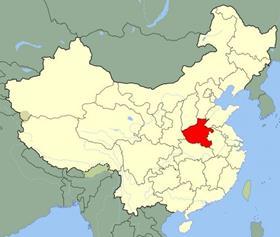
China’s major coastal cities of Guangzhou, Shanghai and Beijing are commonly seen as the key markets for imported fruit in China, but a new wholesale market in Zhengzhou – capital city of the central Chinese province of Henan – has set out its stall to become the largest food market in Asia.
The first phase of the market, which is dedicated to fresh fruit and vegetable trading, opened earlier this month, and has received a delegation of US fresh fruit exporters during Chinese New Year.
The US delegation was organised by John Wang, CEO of Chinese fruit importer Lantao, who hails from Zhengzhou, and Jim Provost of US affiliate I Love Produce, which has been importing garlic and organic foods from China for 10 years.
The new market is managed by Wanbang International Agricultural Products Logistics Co whose director Bi Xueping reportedly told the delegation that the company will invest a total of Yn9bn (US$1.4bn) to build the logistics and trading project for agricultural products in Zhengzhou.
Due for completion in 2015, the market will involve over 100,000 employees and 1,000 vendors with the capacity to handle over 400 containers of food products a day, said Bi.
The second phase of the project, which is aiming to become the largest food market in Asia, will focus on grains, edible oils, meat and seafood. The facility, which covers an area of 875 acres (354ha) or 3.53km2, encompasses storage facilities, a quality inspection facility and a research institute as well as housing, according to a press statement from Lantao.
Home to 94m people, Henan is China’s third most populous province although per capita GDP is low compared to eastern and other central provinces. With a focus on agriculture, coal, machinery and textiles, Henan is also the fifth largest provincial economy and the largest among inland provinces.
Henan’s neighbouring provinces are Shaanxi, Shanxi, Hebei, Shandong, Anhui and Hubei, and Lantao estimates that the Zhengzhou-based market has the potential to reach some 600m consumers from its central distribution point.
Zhengzhou is something of a logistical crossroads in the country, which also lends the market to becoming an entrepot for the country’s food trade. According to Lantao, the city is part of traditional transport artery where the north-south (Beijing-Guangzhou) railway and the east-west (Lanzhou-Lianyungang) railway cross. Almost all trains bound for Beijing, Shanghai and Xi’an pass through Zhengzhou, the company noted.
Marking its confidence in the region’s fresh produce trade prospects, Lantao opened an office in Zhengzhou last year, adding to its existing offices in Shanghai, Beijing, Guangzhou and Shanyang.
“Zhengzhou is my hometown,” Wang said. “I have very deep roots in this area, and that was my original reason for opening an office here. When people think of China’s import markets, they usually think big coastal cities like Shanghai, Beijing and Guangzhou. We purchased three stalls in the new market because with the potential for growth in central China this will be just as important as the coastal areas in the future.”
The delegation of US fruit exporters to China, which also visited Shanghai, Beijing and Guangzhou, included Jon Zaninovich and Brian Crettol, president and sales manager respectively of Jasmine Vineyards; and Stemilt Growers’ Tate Mathison (sales), Dave Martin (export sales manager) and Bill Young (export sales).
Wang said he encouraged Lantao’s shippers to visit its offices and markets in China to build relationships and learn about the different standards required. “Lantao has offices in five Chinese cities and each city is as different as New York is from Los Angeles or Chicago,” he said.



